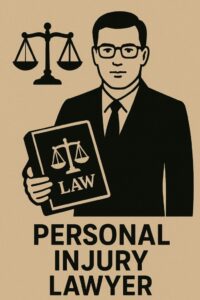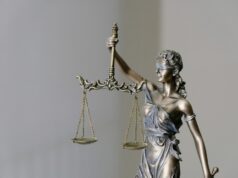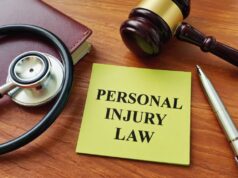As a CEO, your primary focus is often on growth, innovation, and market position. Yet, true leadership also demands vigilance over the unseen details that protect your people and your brand. One of the most overlooked risks in corporate real estate management is the polished lobby floor, a South Bend personal injury lawyer would tell you a surface designed to impress but, if mishandled, capable of undermining both safety and reputation. During morning rush hour, when employees, clients, and visitors converge on your building, an overly polished or poorly maintained lobby can quickly become a liability.
Why Polished Floors Pose a Strategic Risk
Polished floors are often selected to signal prestige, professionalism, and attention to detail. However, in the context of morning traffic, the very shine that conveys elegance may create a hidden hazard. Add moisture from umbrellas, rain-soaked shoes, or snowy boots, and the lobby becomes an environment where accidents are far more likely.
From an executive standpoint, this is not just a facilities issue—it’s a brand and liability issue. A single slip-and-fall accident can translate into medical claims, legal expenses, insurance disputes, and reputational harm. For organizations that compete for top talent and high-value clients, the message conveyed by an unsafe or poorly managed lobby can be as damaging as the accident itself.
Common Oversights in Floor Maintenance
Over-Polishing Surfaces
The temptation to keep lobbies gleaming often results in over-polished floors. While visually impressive, these surfaces can be treacherous in high-traffic conditions. CEOs should recognize this as a preventable operational hazard that requires a clear balance between aesthetics and safety.
Insufficient Signage
Many accidents occur simply because people are not warned. Busy professionals rushing through a lobby rarely pause to scan their environment for risks. The absence of well-placed signage leaves individuals unaware of slick flooring, increasing the likelihood of injury. For leadership teams, this highlights the importance of mandating consistent, visible safety communication.
Scheduling During Peak Hours
Another common oversight is conducting floor polishing or cleaning during times of high foot traffic. When this happens, employees and visitors are effectively forced to navigate unsafe conditions. CEOs should ensure that facilities policies strictly prohibit such practices and instead prioritize off-peak maintenance.
Key Risk Factors Every Leader Should Monitor
Material Choices
Surfaces like polished marble, granite, and high-gloss tiles convey prestige but are notoriously slippery. When moisture is introduced, the risk of accidents increases sharply. Choosing textured finishes or applying anti-slip treatments allows companies to maintain a professional look without sacrificing safety.
Environmental Conditions
Weather is a constant variable that can quickly turn a lobby into a hazard. Rain, snow, or slush tracked indoors makes polished floors especially dangerous. Entry mats, proper drainage, and a clear wet-floor protocol are essential safeguards, and every building should have seasonal contingency plans in place.
Footwear Compatibility
While organizations can’t control the shoes people choose to wear, they can reduce risks by making small accommodations. Offering disposable shoe covers, installing absorbent mats, or posting reminders about safe footwear during bad weather are practical steps that demonstrate foresight and help prevent avoidable accidents.
Solutions That Align with Executive Priorities
Invest in Non-Slip Surfaces
Installing slip-resistant coatings or textured flooring is an investment that safeguards people while reinforcing a culture of care. Unlike cosmetic changes, these solutions provide long-term value by reducing both risk and liability.
Restructure Maintenance Schedules
Mandating that floor polishing and cleaning occur exclusively outside of rush hour is a small operational adjustment with significant payoff. This scheduling discipline reduces exposure to fresh polish and damp surfaces during the busiest times of day.
Strengthen Visibility and Accountability
Clear, visible signage and staff training should be non-negotiable. Empowering facilities teams to act quickly when hazards arise not only prevents accidents but also signals to employees and guests that the organization takes safety seriously.
Why CEOs Should Take Ownership
For senior executives, the issue extends well beyond compliance. Addressing floor safety reflects the broader leadership principle of safeguarding both people and brand reputation. By enforcing proactive safety measures, you reduce exposure to costly lawsuits, protect your workforce, and reinforce an organizational culture of accountability.
When leaders ignore details like lobby maintenance, they send an unintended message: that presentation matters more than people. Conversely, by prioritizing safety alongside aesthetics, CEOs affirm that operational excellence includes vigilance over the smallest but most consequential details.
Final Thoughts
Your lobby is more than just an entryway; it’s a stage where first impressions are formed and company values are tested in real time. A polished floor should represent professionalism, not negligence. By instituting smarter scheduling, investing in non-slip treatments, and holding teams accountable, CEOs can transform a potential liability into a mark of operational excellence.
For businesses already facing the consequences of a lobby-related accident, or for those seeking guidance on risk prevention, South Bend personal injury lawyer provide experienced counsel in premises liability matters. Their expertise can help ensure your organization remains both legally protected and publicly respected.





